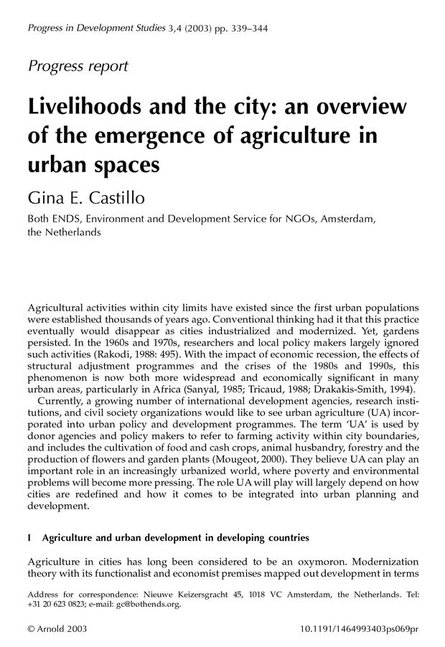
Agricultural activities within city limits have existed since the first urban populations were established thousands of years ago. Conventional thinking had it that this practice eventually would disappear as cities industrialized and modernized. Yet, gardens persisted. In the 1960s and 1970s, researchers and local policy makers largely ignored such activities (Rakodi,1988: 495). With the impact of economic recession, the effects of structural adjustment programmes and crises of the 1980s and 1990s, this phenomenon is now both widespread and economically significant in many urban areas, particularly in Africa (Sanyal, 1985; Tricaud, 1988; Drakakis-Smith, 1994). Currently, a growing number of international development agencies, research institutions, and civil society organisations would like to see urban agriculture (UA) incorporated into urban policy and development programmes. The term ‘UA’ is used by donor agencies and policy makers to refer to farming activity within city boundaries, and includes the cultivation of food and cash crops, animal husbandry, forestry and the production of flowers and garden plants (Mougeot, 2000). They believe UA can play an important role in an increasingly urbanized world, where poverty and environmental problems will become more pressing. The role of UA will play will largely depend on how cities are redefined and how it comes to be integrated into urban planning and development.
Links
Resource collections
- UN Habitat - Urban Response Collection
- Urban Response - Urban Crisis Preparedness and Risk Reduction
- Urban Response Collection - Community Engagement and Social Cohesion
- Urban Response Collection - Economic Recovery
- Urban Response Collection - Environment and Climate Change
- Urban Response Collection - Housing, Land and Property
- Urban Response Collection - Urban Crisis Response, Recovery and Reconstruction
- Urban Response Collection - Urban Resilience